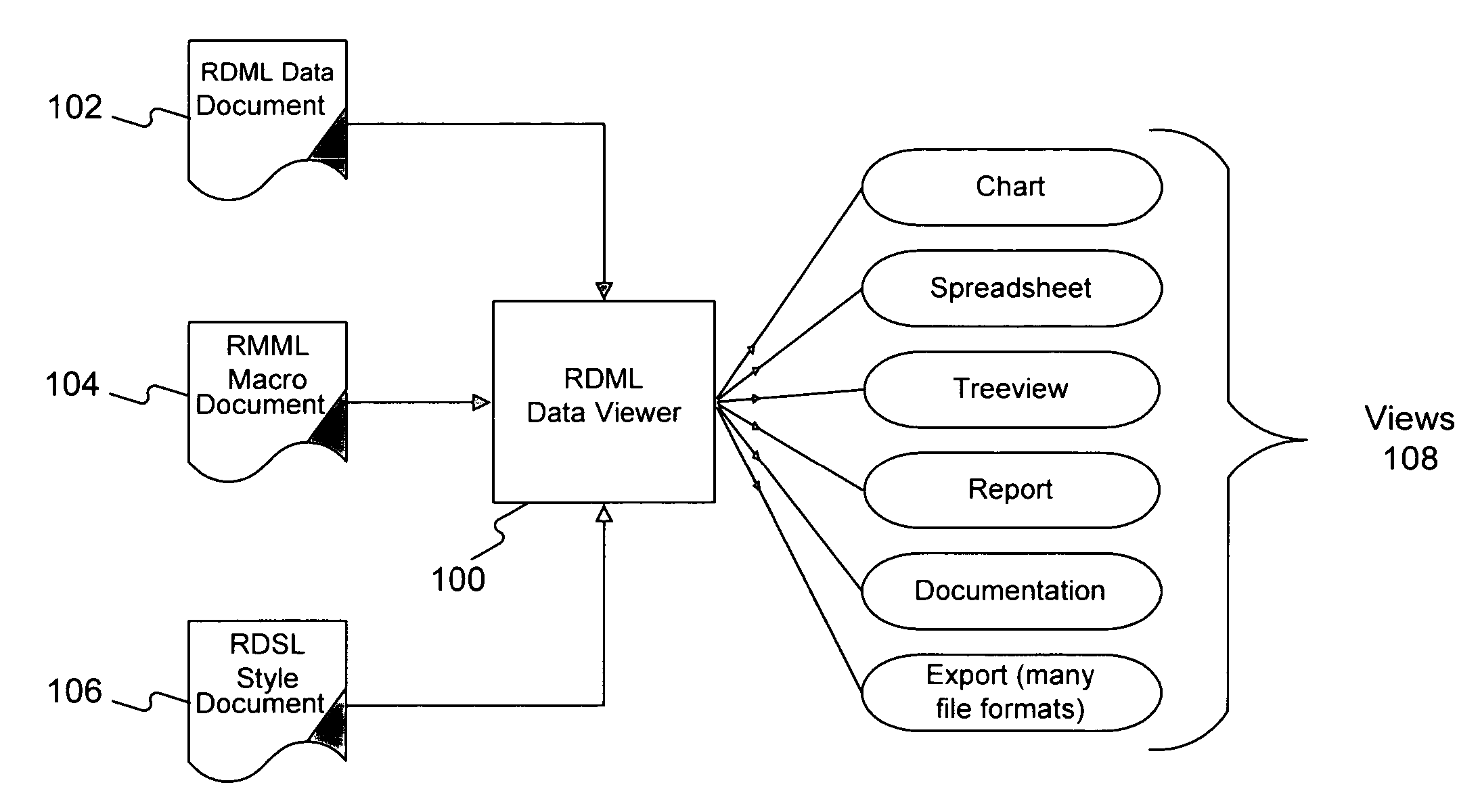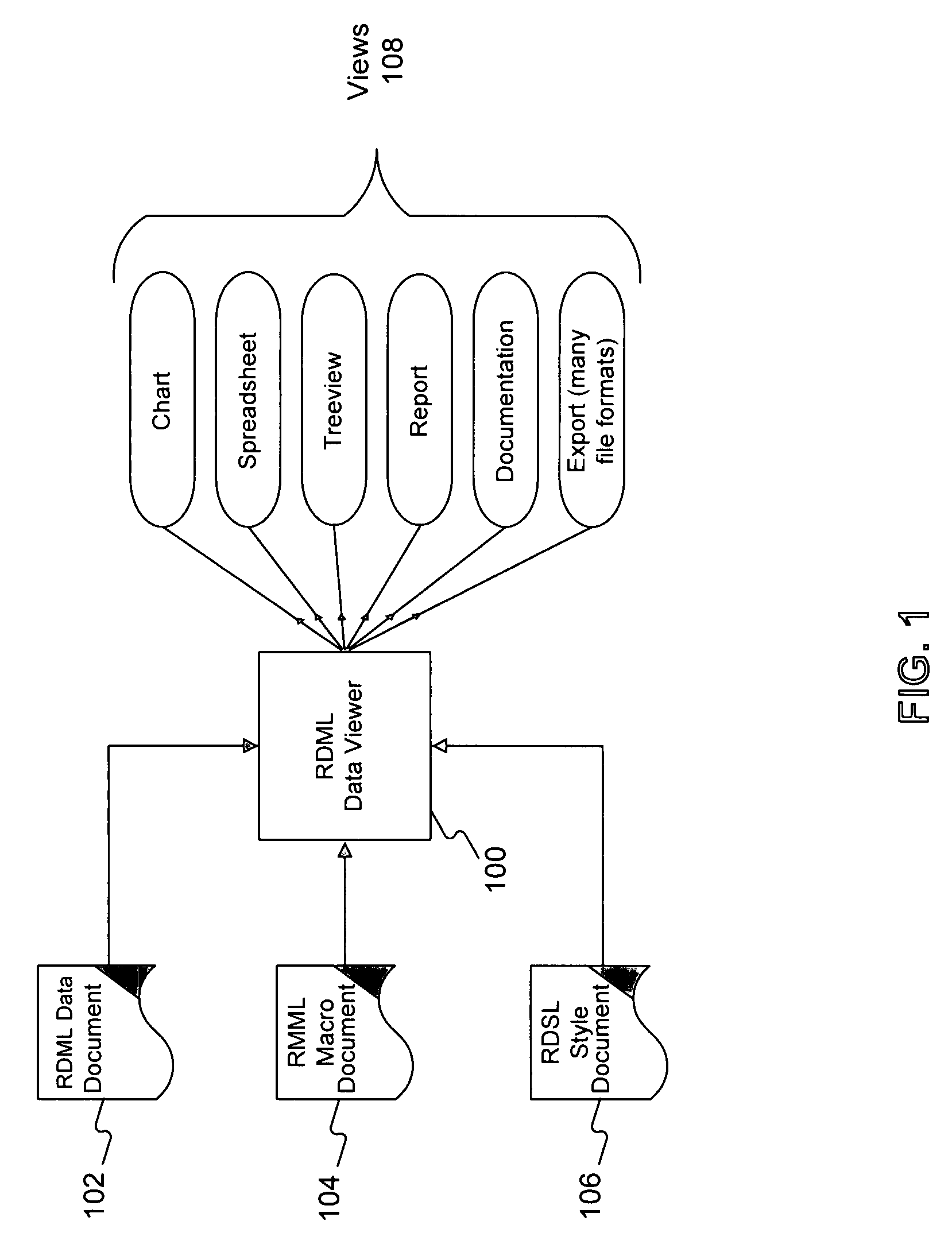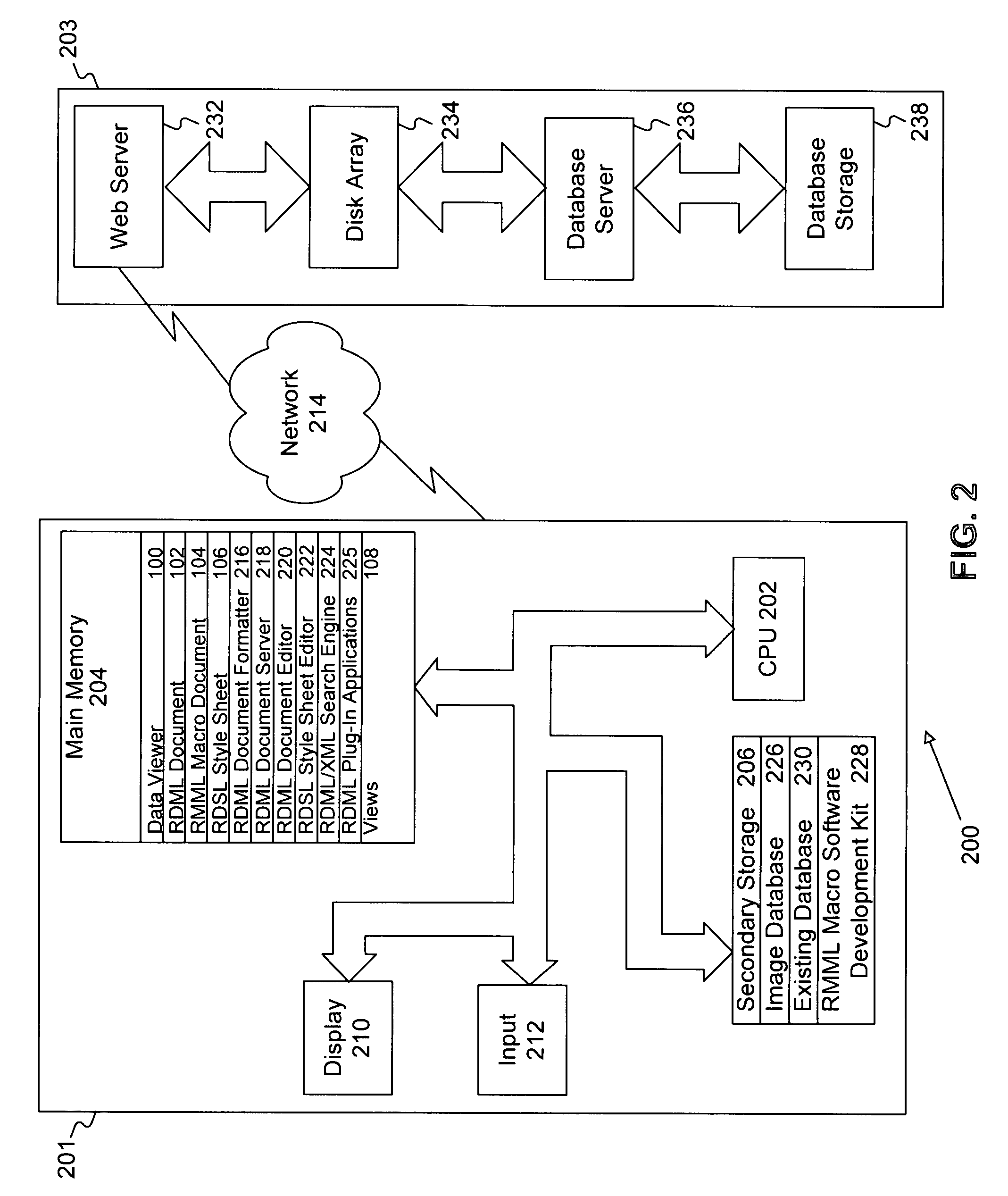Tree view for reusable data markup language
a data markup and tree view technology, applied in the field of data processing systems, can solve the problems of data not being both, data manipulation often increasing expense and difficulty, and individual markup languages are not compatible with each other, and achieve the effects of low cost, easy to write, and widespread access on demand
- Summary
- Abstract
- Description
- Claims
- Application Information
AI Technical Summary
Benefits of technology
Problems solved by technology
Method used
Image
Examples
Embodiment Construction
[0066] Because of the length of the detailed description, the following table of contents is provided.
Topic Section
Reusable Data Markup Language Overview . . . I
Reusable Macro Markup Language Overview . . . I.A
System Hardware Components . . . II
System Overview . . . III
System Details . . . IV
[0067] Internal Data Viewer Architecture . . . IV.A [0068] Document Type Definition . . . IV.A.1 [0069] Reader, Parser and Processor . . . IV.A.2 [0070] X-value Transformer and Line Item Set Types . . . IV.A.3 [0071] Primary Data Store . . . IV.A.4 [0072] Chart View . . . IV.A.5 [0073] Tree View . . . IV.A.6 [0074] Spreadsheet View . . . IV.A.7 [0075] Footnote View . . . IV.A.8 [0076] Tagging Wizard . . . IV.A.9 [0077] Aspects of RDML Documents . . . IV.A.10
[0078] Graphical User Interface and HTML browser . . . IV.B
[0079] Reusable Macro Markup Language . . . IV.C [0080] RMML Macro Package . . . IV.C1
I. RDML Overview
[0081] Methods and systems consistent with the present inventio...
PUM
 Login to View More
Login to View More Abstract
Description
Claims
Application Information
 Login to View More
Login to View More - R&D
- Intellectual Property
- Life Sciences
- Materials
- Tech Scout
- Unparalleled Data Quality
- Higher Quality Content
- 60% Fewer Hallucinations
Browse by: Latest US Patents, China's latest patents, Technical Efficacy Thesaurus, Application Domain, Technology Topic, Popular Technical Reports.
© 2025 PatSnap. All rights reserved.Legal|Privacy policy|Modern Slavery Act Transparency Statement|Sitemap|About US| Contact US: help@patsnap.com



